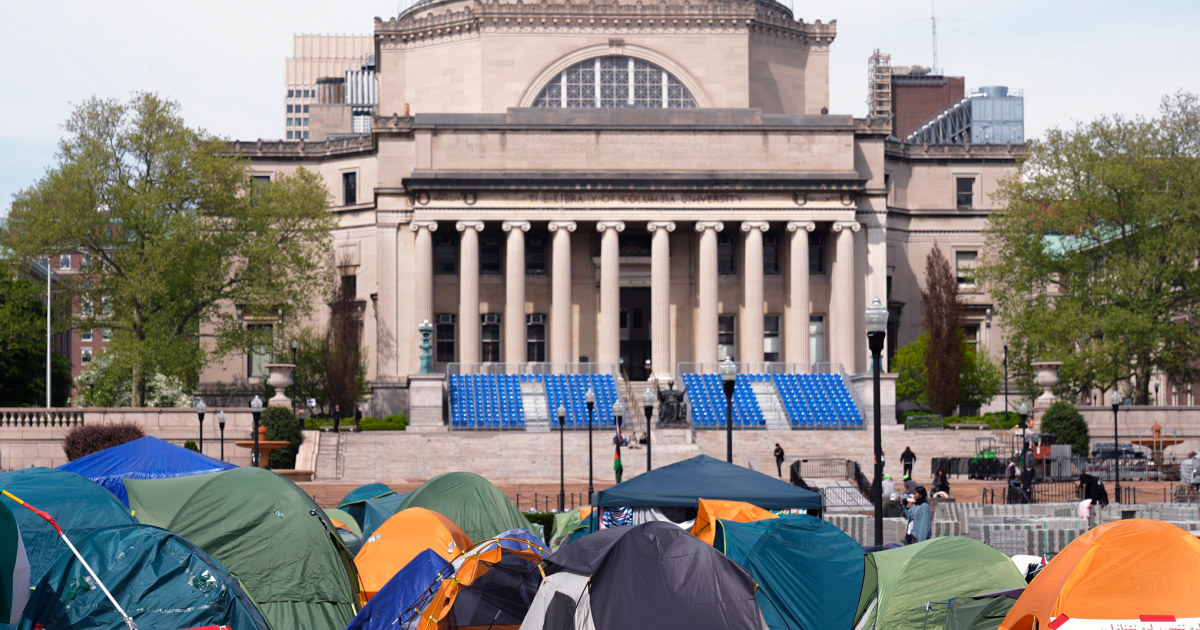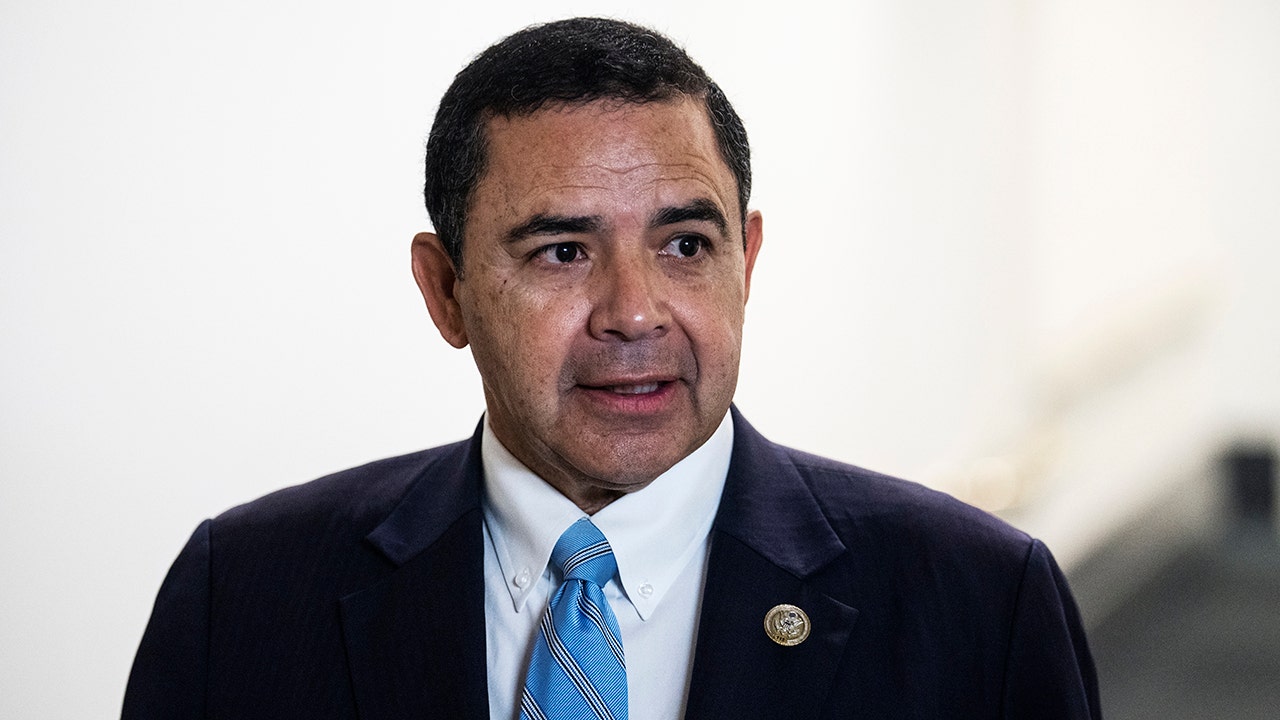Dear friends and followers! I’m beyond thrilled to invite you to my first solo art exhibition at Gallery MAR in Park City, UT this May 31st. It will be the backdrop to my dreams, fears, and hopes, translated into art. pic.twitter.com/8LGcT6SLDe
— Katherine Heigl (@KatieHeigl) April 3, 2024
Utah
Young’s layup at buzzer gives No. 22 Utah 77-76 win over No. 8 Colorado
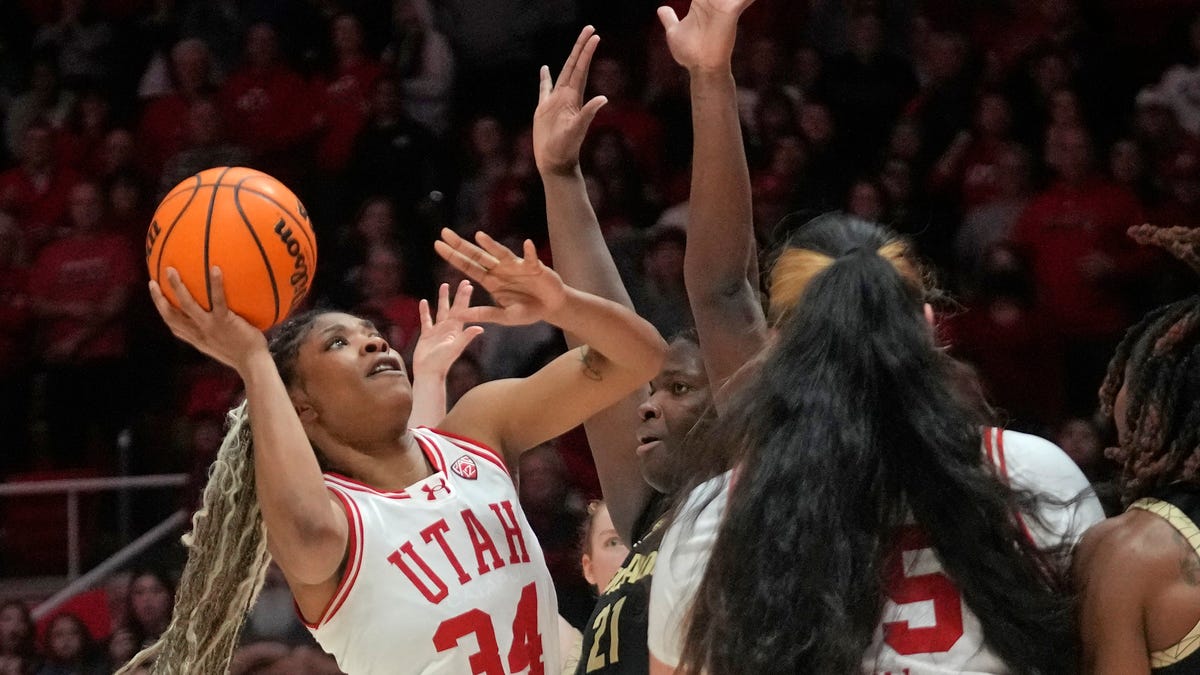
SALT LAKE CITY (AP) — Dasia Young scored 13 points and made a driving layup at the buzzer in her return after missing four games with a concussion, and No. 22 Utah beat eighth-ranked Colorado 77-76 on Friday night.
Alissa Pili scored 18 points to lead Utah (19-7, 9-5 Pac-12), and Inis Vieira had 16 points, eight rebounds and seven assists. The Utes have won eight of 10.
Jaylyn Sherrod scored 15 points and Frida Formann had 10 of her 15 points in the fourth quarter as the Buffaloes (20-5, 10-4) forced seven turnovers in the fourth quarter to turn the game into a thriller.
Formann’s steal and layup gave Colorado its first lead since the first quarter and Aaronette Vonleh, who had 14 points, put the Buffaloes up 76-75 with seconds to play before Young’s heroics.
No. 15 UCONN 85, GEORGETOWN 44
STORRS, Conn. (AP) — Aaliyah Edwards finished with 26 points and a season-high 16 rebounds, Paige Bueckers scored 21 and No. 15 Connecticut breezed past Georgetown.
Edwards made 11 of 16 shots and 4 of 5 free throws for the Huskies (22-5, 14-0 Big East Conference), who upped their win streak against the Hoyas to 38 in a series they lead 54-6. Edwards posted her fifth straight double-double and 13th of the season. Bueckers sank three 3-pointers and had eight assists. Freshman reserve Ice Brady scored 10 on 5-for-5 shooting with five rebounds.
Victoria Rivera made four 3-pointers and scored 16 to pace Georgetown (16-10, 6-9).
No. 20 CREIGHTON 71, ST. JOHN’S 51
NEW YORK (AP) — Morgan Maly and Lauren Jensen each scored 20 points and No. 20 Creighton got its 11th straight victory.
The Bluejays (21-3, 12-2 Big East) have their longest winning streak since posting 11 straight during the 2008-09 season. The program record is 16, set in the 1991-92 season.
Jensen scored 15 points and made all six of her shots in the opening 16 minutes of the game. Emma Ronsiek added 10 points during that span and Maly had nine as Creighton built a 34-15 lead.
Jensen made a 3-pointer with 6:03 remaining in the third quarter to put Creighton ahead by double figures, 45-33, for good. Molly Mogensen scored the first five points of the fourth quarter and Maly started a 10-0 run to make it 69-46.
Ronsiek finished with 14 points for Creighton, which shot 58% from the field including 9 of 18 from 3-point range.
Ber’Nyah Mayo scored 16 points and Jillian Archer added 11 for St. John’s (15-12, 9-6).
No. 25 PRINCETON 74, BROWN 62
PROVIDENCE, R.I. (AP) — Kaitlyn Chen scored 17 points, freshman Ashley Chea added 12 and No. 25 Princeton controlled the fourth quarter in beating Brown to clinch a spot in Ivy Madness.
Princeton pulled away early in the fourth by scoring eight straight points to take a 61-54 lead. The Tigers were 6 of 11 from the field in the fourth, while Brown went 3 of 15.
Chet Nweke had 11 points and nine rebounds for Princeton (19-3, 9-0), which plays at Yale on Saturday.
Grace Arnolie scored 18 points, Kyla Jones had 15 points and eight rebounds, and freshman Olivia Young added 11 points for Brown (13-9, 4-5), which hosts Pennsylvania on Saturday.
___
Get poll alerts and updates on AP Top 25 basketball throughout the season. Sign up here
___
AP women’s college basketball: https://apnews.com/hub/ap-top-25-womens-college-basketball-poll and https://apnews.com/hub/womens-college-basketball

Utah
Katherine Heigl reveals some of her go-to restaurants in Utah

After living in Los Angeles for two decades, “Grey’s Anatomy” star Katherine Heigl decided to raise her family outside of Hollywood, swapping the fast-paced lifestyle for small-town living in Summit County, Utah.
Heigl and her husband, musician Josh Kelley, have made their primary residence in Oakley, where they live in “a big stone-and-wood mountain home,” she recently told Architectural Digest. On her property, you’ll also find a 50-by-50-foot organic garden and an art studio — the Emmy Award-winning actress is preparing to unveil her first solo art exhibition at Park City’s Gallery MAR on May 31, she recently shared on X.
Oakley, a town with a population under 2,000, is roughly a 30-minute drive from Park City and a 50-minute drive from Salt Lake City. Heigl recently opened up about her day-to-day life in the small town, and shared in a Food Diaries segment with Harper’s Baazar where she likes to eat in Utah.
Katherine Heigl shares her favorite restaurants in Utah
In the Harper’s Baazar Food Diaries segment, Heigl reveals her love of Frosted Mini Wheats — saying she sometimes has a bowl for breakfast and lunch.
Since she lives “in the middle of nowhere” and “can’t order anything in,” she said, having cereal for lunch is the easy route — her kids are at school, she doesn’t have to cook and it doesn’t require a lot of cleaning up.
When she goes into the city for groceries, Heigl said she makes a day out of it. Her family will typically dine at Bartolo’s in Park City, an Italian restaurant she described as “simple, but really good.”
Whenever her family makes a trip to Salt Lake City, they always plan on getting sushi at Chopfuku.
“There aren’t like tons of sushi places in Utah, but there are a couple really exquisite ones down in Salt Lake,” she said in the Harper’s Baazar video, which has 655,000 views on YouTube. “So if I’m going to make the trip down to Salt Lake, which is a good hour drive, I always make sure we plan for Chopfuku.”
At home, Heigl said, her husband is the main cook, typically handling breakfast and lunch. But she will usually take care of dinner — chili, spaghetti bolognese and her mother’s meatloaf recipe are some of her go-to meals. Heigl said she also makes a lot of chicken tikka masala and butter chicken because she has “not found great Indian food in Utah.”
“They are probably not as authentically amazing as a restaurant version, but doable,” she said. “I love Indian food.”
After dinner, the “Firefly Lane” star has a go-to treat: a FatBoy ice cream sandwich, which comes from Utah’s very own Cache County.
“I never used to be much of a sweets person, but now every night after dinner, I have to have a FatBoy. … Is that just a Utah thing?” she said with a laugh.
Katherine Heigl on living in Utah
Heigl has lived with her family in Utah for more than a decade — and it’s a life she said she wouldn’t trade for the world.
“I think my children sometimes wish they were in more of a hubbub-y exciting city,” she previously said on an episode of “Today with Hoda & Jenna.” “But I said to them, ‘I understand that you are sacrificing that in some ways but I still think it was the right choice for us as a family because I am more centered and aware of what’s going on in your life.’
“‘It’s a smaller town, I know who your friends are, I know who you are spending time with, I know what’s up with school,’” she continued. “It’s just easier to keep my finger on the pulse.”
It’s a busy season for Heigl’s family in Utah. All of the proceeds from Heigl’s upcoming art exhibit will support the Jason Debus Heigl Foundation, which is “dedicated to ending animal cruelty and abuse” and honors the memory of her late brother, per Park City’s TownLift News.
Heigl’s husband, Kelley — who is the older brother of Lady A singer Charles Kelley — will perform at the Park City Song Summit in August as part of a robust lineup that also features Mavis Staples, My Morning Jacket and Nathaniel Rateliff and the Night Sweats.
Utah
Mailbag: Utah’s post-Whittingham plan, Big Ten kickoffs, USC’s valuation, Colorado’s outlook, BYU’s win total and more

The Hotline mailbag publishes weekly. Send questions to pac12hotline@bayareanewsgroup.com and include ‘mailbag’ in the subject line. Or hit me on Twitter/X: @WilnerHotline.
Please note: Some questions have been edited for clarity and brevity.
Assuming that Utah coach Kyle Whittingham steps away in the not-too-distant future, defensive coordinator Morgan Scalley probably will take over. When other programs have replaced a legend with a key existing staff member, what are some best and worst comparisons? And which might be closest to Utah’s case? — @mattkreuter
We agree that the 64-year-old Whittingham will retire in the next few years and Scalley, the longtime defensive assistant and coordinator, will take over the program.
At one point, Scalley was the official coach-in-waiting, but that designation was revoked after he used a racial slur in a text message. Our sense is that enough time has passed without further incident (or additional revelations) that the Utes could promote Scalley to the throne without significant political fallout.
The comparison that comes immediately to mind — because it happened just a few years ago, not because Utah is destined for the same fate — is Washington promoting Jimmy Lake to replace Chris Petersen in Dec. 2019. That ended poorly, with Lake dismissed after two seasons.
There’s a rough comparison available down the road from Salt Lake City, as well: In 2001, Brigham Young replaced legendary coach LaVell Edwards with Gary Crowton. Although Crowton wasn’t on Edwards’ staff at the time of the transition, he was a BYU alum. Crowton had a stellar first season, then fizzled.
If we expand the scope in both time and terrain, more comparisons come into focus.
Oklahoma replaced Barry Switzer with defensive coordinator Gary Gibbs in 1989. Gibbs cleaned up the mess left behind and lasted six seasons but did not win at the required level.
In 1993, Washington defensive coordinator Jim Lambright was promoted to head coach after UW legend Don James resigned in August amid an NCAA scandal. Lambright lasted six years, never cracking the top 10 in the final AP poll.
In 1998, longtime Nebraska assistant Frank Solich took over for Tom Osborne and averaged 10 wins over four seasons. But success faded in Year Five and Solich was gone soon after.
So there are myriad situations similar to a Scalley-for-Whittingham exchange. In many cases the replacement experienced early success, then lost traction.
And the timelines are shorter these days. In the 1990s, it was common to give coaches five or six seasons. Now, judgement comes after Year Three, if not sooner.
In our view, Oregon offers the best model for Utah. Somehow, the Ducks made internal promotions work twice:
— Offensive coordinator Mike Bellotti replaced Rich Brooks in 1995 and lifted the program to unprecedented heights over the course of his 14 seasons.
— Bellotti then stepped aside before the 2009 season and handed the keys to his playcaller, Chip Kelly, who led the Ducks to 46 wins in four years (and transformed the sport in the process).
None of the aforementioned situations is exactly like Utah’s presumed transition, and the sport is changing dramatically, with economics (e.g., NIL) playing an increasingly large role in roster composition.
Our advice to Utah fans wondering about the post-Whittingham existence: Take comfort in Utah’s previous success.
After all, Whittingham himself was an internal promotion after Urban Meyer left for Ohio State in 2004, and that transition worked out pretty darn well.
Do you predict the eight most valuable football schools form an alliance in the coming years in order to leverage the highest media rights payouts? If such an alliance forms, will USC be included among the eight? — @TerryTerry79
The Trojans would probably make the cut for a Great Eight, although it’s close. Notre Dame, Ohio State, Michigan, Penn State, Texas, Oklahoma, Georgia, Alabama and LSU would be in the discussion, as well.
But we don’t see any indication of an eight-school alliance.
How would that function on a practical level? You need more than eight to create a super league. And how would those eight leverage their media valuation separately given that they are currently under contract (for varying lengths) with their conferences.
The super league concept currently making the rounds is deeply flawed and features 80 schools. That isn’t realistic: Fox and ESPN would not agree to pay premium valuations for Minnesota vs. South Carolina or TCU vs. Arizona.
If massive consolidation materializes, the super league that emerges will have fewer than 80 schools … but far more than eight.
Have Fox and the Big Ten identified the 2024 football games that will be moved to Friday? It’s difficult to make travel plans to attend away games when there is a risk that the game will be moved to a different day. — @Jalex0077
The Friday games have added a layer of complication for fans, and the situation is only getting worse with the increased travel (time and cost) required in bicoastal conferences.
The 2024 Big Ten schedule, released in November, included the following note:
“Selected Saturday games in the 2024 season may be adjusted to select Fridays and other special dates, including Labor Day Sunday and Black Friday.”
Look for the conference to announce a slew of Friday matchups at the end of May, along with the kickoff times for its early-season (non-conference) games.
Our hunch: A significant amount of the Friday dates, if not the majority, will involve West Coast schools.
Are the former Pac-12 teams still going to participate in the bowl games tied to the former conference as speculated several months ago? — @tobsandmags
As we see it, there is no viable alternative. The new homes for the outbound schools (ACC, Big Ten and Big 12) have bowl contracts based on current membership.
Granted, tweaks will be needed to avoid rematches. For instance, the Alamo Bowl pairs the No. 2 team in the Pac-12 with an opponent from the Big 12. Nobody wants Utah playing Iowa State in San Antonio one month after the teams collide in Salt Lake City.
Also, the bowl partnerships are based largely on geography.
Keeping the outbound Pac-12 teams aligned with Pac-12 bowls in the Pacific Time Zone — unless those teams make the cut for the playoff — creates the most cost-effective experience for fans.
With the House lawsuit against the NCAA, shouldn’t more blame and cost be on Arizona State since that’s the institution House swam for? — @bdgiddens6
I cannot help but chuckle and wonder if the author of this question is an Arizona fan, seeking a way to denigrate the Sun Devils.
For those unfamiliar, Grant House is a former ASU swimmer and the named plaintiff in a lawsuit that is transforming college sports by forcing the schools into a revenue-sharing agreement with athletes.
House v NCAA is scheduled for trial next winter but could be settled in the next few months, with a steep price tag.
ESPN and Yahoo have reported the NCAA could owe former athletes almost $3 billion in compensation from the pre-NIL era.
Additionally, schools are preparing to spend about $20 million annually in revenue sharing with current athletes and another $10 million in additional scholarships.
The totality of the cost could force some schools to eliminate Olympic sports or decide they don’t want to compete at the highest level of major college football.
But Grant House’s choice of colleges should not require ASU to carry a larger financial burden. The Sun Devils didn’t subject him to different economic conditions than existed for Olympic sports athletes across the country.
What’s your pick for Colorado’s opener against North Dakota State? And what happens in Boulder when the Bisons beat the Buffaloes? — @PDX_JonathanW
NDSU is one of the top programs in the FCS and, over the years, has defeated a slew of major college teams.
That said, we’re picking the Buffaloes. They should be marginally better than they were last season with improved play on the lines of scrimmage.
But a loss to NDSU would create an exceedingly difficult path into the postseason for second-year coach Deion Sanders.
CU’s conference schedule is daunting with Arizona, Utah and both Kansas schools, while the non-conference lineup again includes Nebraska and Colorado State in September.
How much longer does “Coach Prime” last at Colorado? — @CyclingUte22
We have considered Sanders a short-timer in Boulder since the moment he accepted the job in Dec. 2022. Either he wins this year or next and leaves for a better job, or he flops and resigns.
His recent comments about not following his sons into the NFL are immaterial, in our view.
Even if Sanders wants no part of coaching on Sundays, he would surely entertain offers from his alma mater, Florida State, or an elite college program in the SEC.
Put another way: We would be mildly surprised if he’s coaching the Buffaloes in their 2026 season opener.
Will Brigham Young’s victory total be over or under four in the upcoming season? I’m going with the under. — @utez1568052
Given that FanDuel set BYU’s win total at 4.5, your lean seems reasonable.
The Hotline pegged the Cougars for 13th place in the Big 12 race next season because of the quarterback uncertainty and a wobbly run defense.
But the schedule cannot be ignored, either.
Winning on the road is always difficult. When the home lineup is daunting, as well, the overall margin for error shrivels.
And BYU has one of the toughest home schedules in the Big 12 with Kansas, Kansas State, Arizona and Oklahoma State visiting Provo.
I’m not sure about your projection of fewer than four victories, but we certainly would take under FanDuel’s total of 4.5.
Any developing news on the fate of the Pac-12 Network? — @rEd315
That depends on what you already know.
The Pac-12 Networks will cease to exist as a media distribution company on July 1. However, the infrastructure will remain in place to produce live events for Washington State and Oregon State in 2024-25.
The schools have numerous teams competing as affiliate members of the West Coast Conference and are thereby subject to the WCC’s media requirements. Those include making dozens of competitions available for broadcast on ESPN’s digital platform.
The Pac-12 Networks’ equipment and production staff will carry the load for WSU and OSU, at least for the upcoming year.
After that? The conference has a multi-year lease on the San Ramon office space. But like so much else, that issue is unresolved.
*** Send suggestions, comments and tips (confidentiality guaranteed) to pac12hotline@bayareanewsgroup.com or call 408-920-5716
*** Follow me on Twitter/X: @WilnerHotline
*** Pac-12 Hotline is not endorsed or sponsored by the Pac-12 Conference, and the views expressed herein do not necessarily reflect the views of the Conference.
Utah
Opinion: Campus protests lead to change. It’s how we got the University of Utah to divest from South Africa.
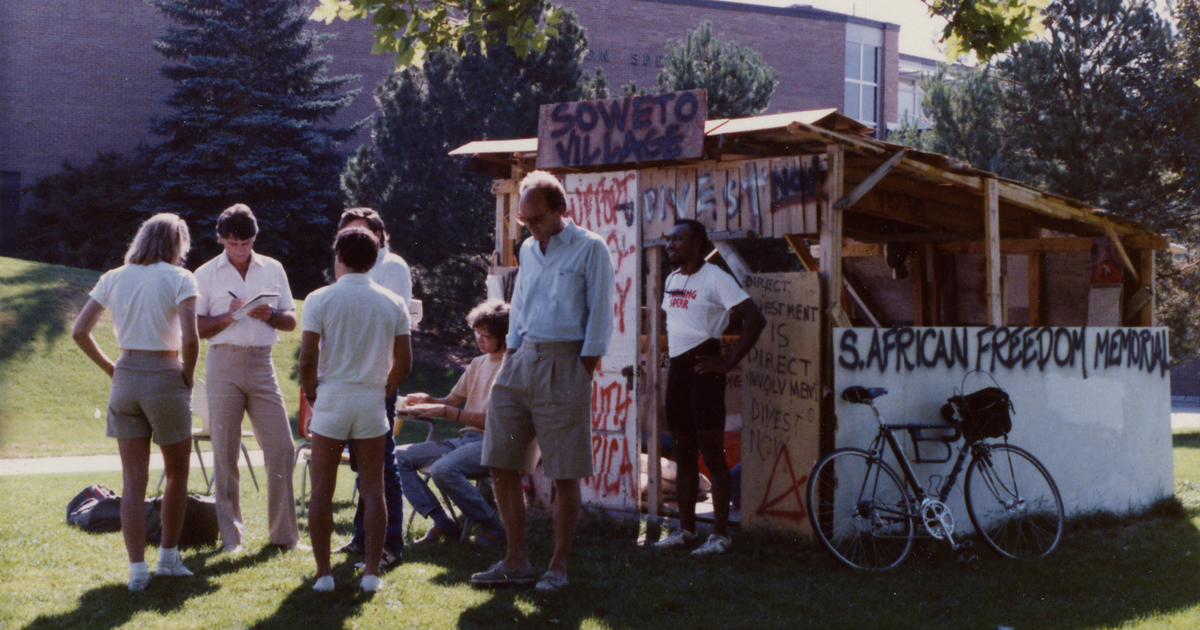
These protests should make you uncomfortable. That’s the point.
(Special Collections, Marriott Library, University of Utah) University of Utah students erect a structure to advocate the university’s divestment of South Africa in 1985. The group, Students Against Apartheid, joined protests around the world to end segregation.
The unrest at the University of Utah around Gaza is a deeply disturbing sight. Not because of the students protesting, but rather the immediate and violent police reaction to forcibly shut it down.
Whatever you think about Israel and Palestine, we can and should and indeed must debate these issues fully — and in public. That debate in the public square is the foundational bedrock on which our republic rests.
And if there’s any place in our society where strident voices should clash, it’s on our campuses. That is their very purpose — to allow ideas and identities to bump against each other, to challenge our accepted beliefs.
I should know. In early 1986, I was part of a group of students that built and occupied shanties at the U. over 18 months, protesting apartheid in South Africa and demanding divestment from companies. The shanties were ugly, annoying, in your face — which was precisely the point, to bring to life something we students were connected to half a world away.
(Special Collections, Marriott Library, University of Utah) University of Utah students erect a structure to advocate the university’s divestment of South Africa in 1985. The group, Students Against Apartheid, joined protests around the world to end segregation.
Opposition was fierce — we were firebombed by students who disagreed with our expression, and they weren’t the only ones.
After six months, administrators moved to forcibly evict the protestors. So we sued in federal court, arguing that a structure was a form of free speech. And in a groundbreaking decision, a federal court agreed and ordered we be allowed to continue our protest.
So the protests continued and, over a year-and-a-half, the issue was debated constantly — because the protests forced the issue onto the agenda. And in the end, we won. The University finally agreed, and joined hundreds of other institutions in voting with their dollars against supporting institutional racism.
In his landmark history of the U.S. and South Africa during the apartheid years, “Loosing the Bonds,” Robert Massie notes divestment, along with trade/financial sanctions and cultural restrictions, broke the back of the racist regime’s ability to operate. It collapsed, Nelson Mandela went free and apartheid ended. We had added our grains of sand to the avalanche that overwhelmed the defenders of oppression and tyranny.
But it doesn’t and shouldn’t matter that we were right in our protests, that history ultimately vindicated our occupation of part of campus as a part of the global struggle to end the institutionalized racism in South Africa.
The value of protest isn’t in being correct, it is a thing unto itself. Democracy is a participatory sport. The fights over who gets to hold power and decide what rules we all live by are the very heart of what makes this country exceptional, in spite of all its many shortcomings.
What really mattered was that we all got to participate, to put our shoulders to the wheel and push along on this great journey of perfecting the American experiment.
It’s been that way from the very beginning. Fights over ideas are literally written into the source code of America, a constant tension between individuality and social responsibility, between freeborn and slave, between native and immigrant. Fights in word and deed. Recall, one of our founding acts that won our freedom had nothing to do with speech at all — it was dumping tea in Boston Harbor.
(Special Collections, Marriott Library, University of Utah) University of Utah students erect a structure to advocate the university’s divestment of South Africa in 1985. The group, Students Against Apartheid, joined protests around the world to end segregation.
Protest is supposed to make us uncomfortable, and it has a rich history at the U. stretching back decades. Protests force us to stop our daily mundanities and look and reckon and reflect. It’s also a pressure valve — it allows us to fight out ideas without guns and violence. Stopping traffic, camping on the lawn, they all have their place. And they are legally protected rights that must not be infringed.
So the shutting down of protests at the U. isn’t some defense of public order, it’s an attack on the very idea of what being an American is, and it’s part of a deeply worrisome trend. The concept of “fake news,” of demonizing science and facts we don’t agree with like that vaccines work or that climate change is real, are acid on the foundation of our society.
I grew up Mormon in Utah, and have always bragged to anyone who’ll listen about how curious Utahns are about other people and ideas. But that can’t be just trying their foods and dances at the Living Traditions festival. It has to embrace their history, culture and conflicts, too.
We should be proud of those students, regardless of opinion, standing up and shouting out for what they believe. They represent the best of us, because they still believe that voices matter, that opinion matters, that ideas matter. If we lose that, we are truly lost.
(Photo courtesy of Tom Price) Tom Price
Tom Price grew up in Provo and attended the University of Utah. He is now a climate entrepreneur in California.
The Salt Lake Tribune is committed to creating a space where Utahns can share ideas, perspectives and solutions that move our state forward. We rely on your insight to do this. Find out how to share your opinion here, and email us at voices@sltrib.com.
-

 News1 week ago
News1 week agoLarry Webb’s deathbed confession solves 2000 cold case murder of Susan and Natasha Carter, 10, whose remains were found hours after he died
-

 News1 week ago
News1 week agoFirst cargo ship passes through new channel since Baltimore bridge collapse
-

 World1 week ago
World1 week agoHaiti Prime Minister Ariel Henry resigns, transitional council takes power
-

 World1 week ago
World1 week agoSpanish PM Pedro Sanchez suspends public duties to 'reflect'
-

 World1 week ago
World1 week agoUS secretly sent long-range ATACMS weapons to Ukraine
-

 Movie Reviews1 week ago
Movie Reviews1 week agoHumane (2024) – Movie Review
-

 News1 week ago
News1 week agoAmerican Airlines passenger alleges discrimination over use of first-class restroom
-

 Education1 week ago
Education1 week agoVideo: Johnson Condemns Pro-Palestinian Protests at Columbia University
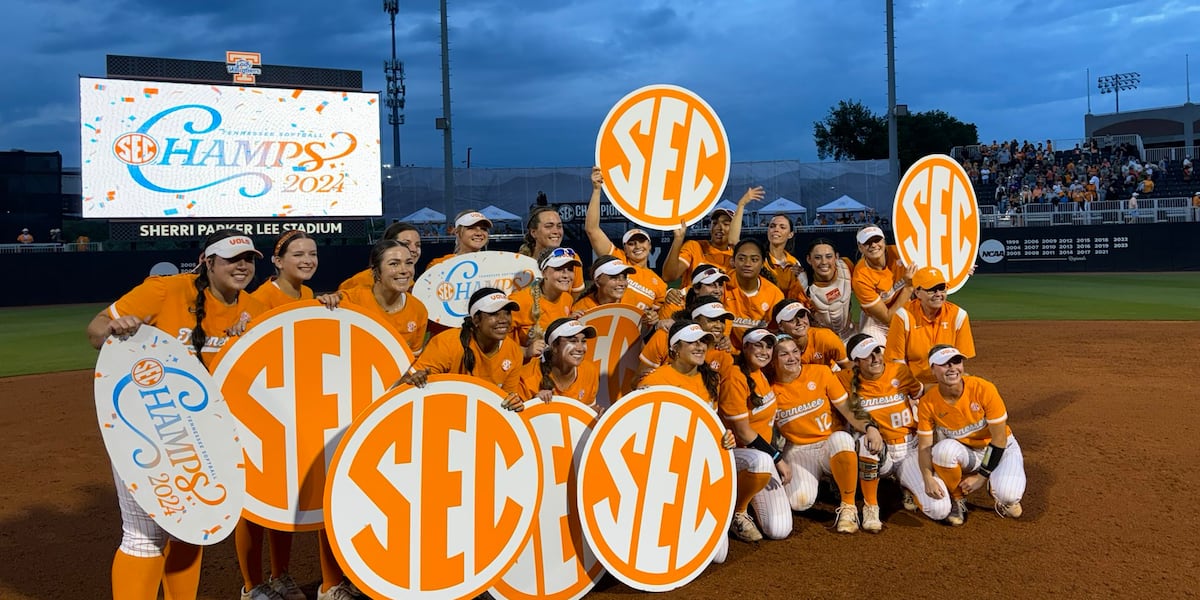





:max_bytes(150000):strip_icc():focal(749x0:751x2)/larry-dannielynn-birkhead85-0503202405032024-fde89524d3304fec85da39462370be2b.jpg)

:max_bytes(150000):strip_icc():focal(984x261:986x263)/Lewiston-bowling-alley-050324-2-8e295ad253674669b35f288e148929bc.jpg)






